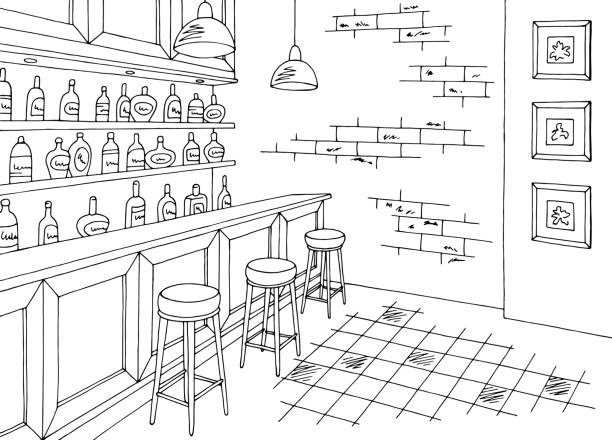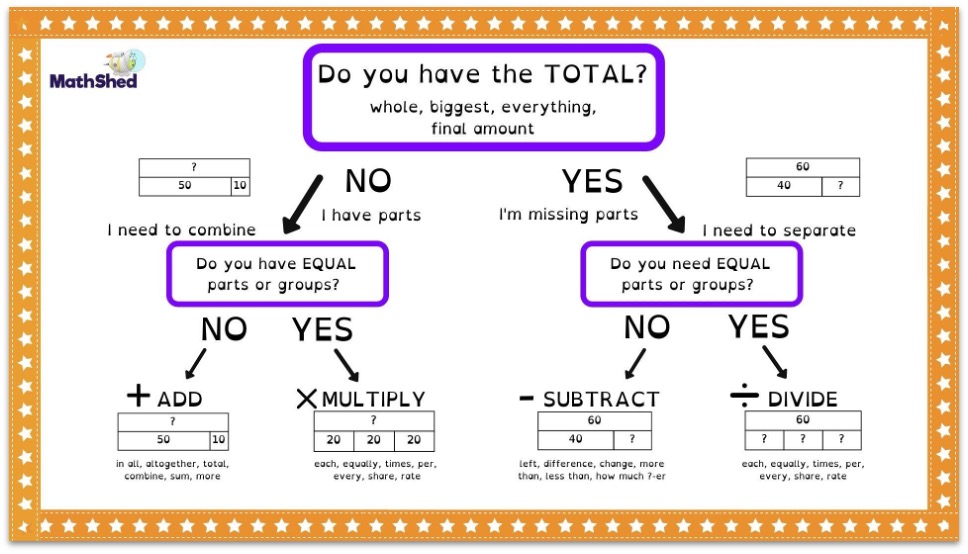Discover how kids can master problem solving with bar model drawing techniques
Wiki Article
Opening the Power of Bar Version Drawing Techniques for Effective Problem Solving in Mathematics
Bar model drawing strategies use an unique visual strategy to mathematics that can enhance analytic capacities. By simplifying complicated connections and making abstract ideas much more obtainable, these versions serve as effective devices for students. The effectiveness of bar models relies greatly on proper application. Comprehending the essential concepts behind their use can cause significant enhancements in mathematical comprehension and communication. The concern stays: just how can teachers best incorporate these techniques into their training approaches?Understanding Bar Designs: A Visual Approach to Mathematics
Although maths can frequently appear abstract and challenging, bar versions offer an aesthetic method that simplifies analytic and improves understanding. These versions use rectangular bars to stand for connections and numbers, making mathematical principles extra concrete. By aesthetically segmenting amounts, bar designs permit trainees to much better understand operations such as enhancement, department, reduction, and multiplication.When confronted with word troubles, pupils can attract bars to stand for various aspects, helping in the visualization of connections between numbers. This technique not just aids in arranging details however additionally encourages abstract thought. As an example, in a trouble including complete amounts, bar versions can delineate parts and wholes, making clear the required estimations. As trainees experiment bar models, they establish self-confidence in their mathematical capacities, permitting them to come close to complex problems with an organized mindset - bar model drawing techniques. Therefore, bar models work as a necessary device in the student's mathematical toolkit

The Advantages of Utilizing Bar Models in Trouble Fixing
Bar designs supply various benefits when it comes to problem fixing in maths. They provide an aesthetic depiction of numerical partnerships, allowing students to conceptualize issues better. By converting words right into bars, learners can break down complicated scenarios right into manageable parts, thus facilitating a more clear understanding of the trouble available.In addition, bar versions promote vital reasoning and analytical skills as students learn to control benches to discover services. This aesthetic help helps in determining patterns and connections amongst numbers, making abstract principles a lot more tangible. Additionally, bar versions boost interaction in maths, enabling students to articulate their assumed processes and services clearly.

Just How to Create Efficient Bar Models
Developing reliable bar designs calls for a systematic technique that stresses clearness and accuracy. The primary step entails determining the problem's crucial parts, including relationships and quantities. Next, one should pick proper devices for depiction, ensuring symmetry among benches. This help in imagining the partnerships more accurately.After determining the amounts, the version should be drawn, clearly classifying each bar to reflect its equivalent value. Making use of various shades can boost understanding by comparing different aspects in the issue. It is likewise necessary to preserve constant spacing between bars, which helps avoid confusion.
When the model is created, confirming its accuracy via calculations enhances its effectiveness. Practicing with a selection of problem kinds will enhance effectiveness in creating bar versions. Inevitably, a well-designed bar model not just streamlines intricate problems yet additionally helps with deeper understanding and problem-solving skills in maths.
Bar Models at work: Real-Life Instances
When related to real-life circumstances, bar models can effectively highlight complex connections and amounts, making them important devices in different contexts. In budgeting, individuals can use bar designs to visually compare revenue and expenses, helping in determining surplus or shortage. In a grocery purchasing circumstance, a bar model can represent the expense of various products, allowing consumers to promptly evaluate overall costs and make informed choices.In sporting activities, coaches could employ bar designs to analyze player stats, such as points scored over a season, helping to identify efficiency trends. Additionally, in task administration, bar models can show job periods and resource allotments, facilitating more clear interaction amongst group participants. These instances show how bar models transcend scholastic boundaries, giving quality in daily decision-making and improving understanding of measurable relationships in various fields.
Integrating Bar Designs Into Class Knowing
Integrating bar designs into class knowing can significantly boost trainees' ability to visualize mathematical principles. This method not only help specific understanding but also fosters collective discovering among peers. By collaborating to resolve issues utilizing bar versions, trainees can establish deeper understandings and strengthen their mathematical abilities.Visualizing Mathematical Principles
Bar models work as a powerful tool for visualizing mathematical principles in the classroom. By representing numbers and partnerships through bars, students get a more clear understanding of abstract ideas such as enhancement, multiplication, subtraction, and division. This visual aid streamlines complex problems, allowing learners to damage them into manageable parts. Educators can effectively demonstrate connections in between quantities, making it much easier for trainees to realize concepts like proportion, percentage, and portions. Bar versions additionally motivate independent analytic, as students can control the graph to locate services. Incorporating these designs into lessons not only enhances student engagement but also sustains diverse knowing designs, guaranteeing that all trainees can access and understand mathematical material a lot more successfully.Motivating Collaborative Discovering
Collective understanding can be considerably enhanced with using bar versions in the class. By including these visual tools, instructors can cultivate a setting where students participate in group analytic, leveraging each various other's toughness. Bar models facilitate conversations, allowing learners to verbalize their thought procedures and reasoning clearly. This aesthetic representation encourages diverse techniques to take on mathematical problems, promoting deeper understanding. Pupils can compare their designs, determine inconsistencies, and collaboratively refine their solutions (bar model drawing techniques). In addition, collaborating with bar versions cultivates necessary skills such as interaction, important reasoning, and teamwork. Overall, incorporating bar designs right into collaborative learning not just strengthens mathematical understanding however likewise develops a helpful class society where pupils pick up from each other
Common Mistakes to Stay Clear Of When Using Bar Versions
They often run into specific mistakes that can prevent their understanding of mathematical concepts when trainees engage with bar designs. One common error is misrepresenting the quantities included. Students might attract bars of unequal lengths to stand for equivalent worths, resulting in confusion. Furthermore, failing to identify benches plainly can result in uncertainty concerning what each bar symbolizes. One more regular error is neglecting the relevance of scaling; students may neglect to keep symmetry, impacting the analysis of relationships in between numbers.In addition, some learners may hurry through the analytic procedure, ignoring to examine the trouble prior to attracting the model. This can result in incorrectly structured bars that do not correspond to the problem's demands. Finally, trainees in more info some cases concentrate solely on completing the model without reflecting on the option, missing out on the possibility to strengthen their understanding of the underlying mathematical principles. Recognition of these blunders can considerably boost the performance of bar model strategies.
Urging Crucial Analyzing Bar Version Techniques
In addition, bar models advertise discussion and partnership among peers, as pupils share their solutions and interpretations. This exchange of concepts cultivates an essential frame of mind, permitting pupils to examine numerous methods to a problem. Ultimately, including bar model strategies in mathematics education and learning not just improves analytical capacities yet likewise nurtures the crucial reasoning abilities needed for scholastic success and real-world applications.Often Asked Concerns
Can Disallow Versions Be Made Use Of for Advanced Mathematical Concepts?
Bar versions can certainly be made use of for advanced mathematical principles. They give visual depiction and streamline intricate troubles, assisting in understanding connections and procedures. This technique enhances analytical skills across numerous degrees of mathematical effectiveness.What Age Team Conveniences The Majority Of From Bar Model Techniques?
Kids aged 7 to 12 benefit most from bar version strategies. This age often has problem with abstract ideas, and bar designs give aesthetic assistance, improving their understanding and problem-solving abilities in mathematics.Exist Digital Devices for Creating Bar Models?
Yes, there are a number of electronic devices available for producing bar models, consisting of software program like Google Drawings, Microsoft PowerPoint, and specialized instructional applications made for visualizing mathematical ideas through bar modeling techniques effectively.Exactly How Do Bar Designs Compare to Other Aesthetic Aids?
Bar versions supply a clear, structured depiction of mathematical connections, commonly using benefits over other visual aids by streamlining intricate troubles (bar model drawing techniques). Unlike pie charts or charts, they boost recognizing through straight comparison and symmetrical depictionCan Disallow Designs Aid With Non-Mathematical Problem Fixing?
Bar models can assist with non-mathematical trouble addressing by aesthetically representing relationships and components, streamlining complicated circumstances. Their structured technique aids individuals examine problems clearly, promoting much better decision-making and calculated thinking in various contexts.As students method with bar designs, they establish self-confidence in their mathematical capabilities, permitting them to approach intricate troubles with a structured way of thinking. In addition, bar models advertise important reasoning and logical skills as students learn to manipulate the bars to discover options. Furthermore, stopping working to label the bars plainly can result in uncertainty about what each bar represents. Bar designs give a clear, organized representation of mathematical relationships, often supplying benefits over other aesthetic help by streamlining intricate troubles. Bar models can assist with non-mathematical trouble fixing by visually standing for relationships and components, streamlining complicated scenarios.
Report this wiki page